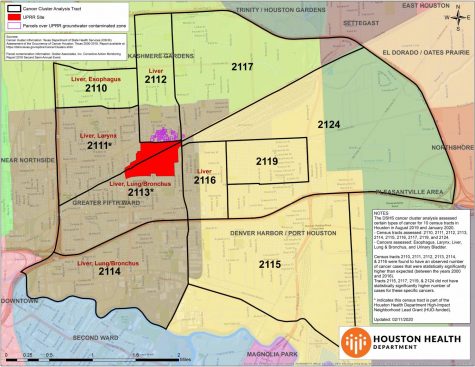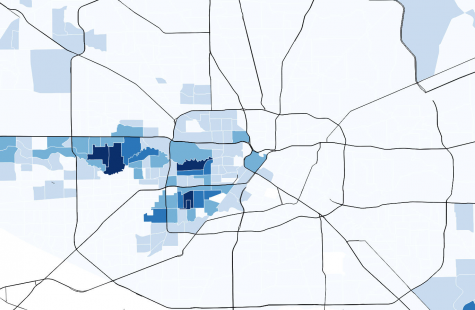Disparate realities in the same city
July 16, 2021
Industrial facilities dominate the landscape Bradley drives through on his 45-minute commute to school.
Meanwhile, in Bellaire, junior Thalie Waters always sees the “pretty side of oil.”
“Considering where I live and normally go, I rarely ever see the refineries or the smoke or the factories, even though I am very aware of them,” Waters said.
The stark dichotomy between the lush green lawns and soot-coated streets stems from a history of deliberate policy decisions.
Houston’s massive infrastructure upholds its reputation as the stronghold of American oil — every day, the 10 refineries dotting the Houston metro area process nearly three billion barrels of crude oil, according to Energy Capital.

But underlying Houston’s status as an industrial juggernaut is a tortured legacy of environmental racism, defined as the disproportionate impact of environmental hazards on people of color.
“Racism isn’t just a moral failure,” said Irene Vázquez (ʼ17), a recent Yale graduate and former editor-in-chief of the Review who has reported on equitable development in Houston’s Third Ward for the Texas Observer. “It’s a systemic issue, and environmental racism is jarring proof.”
Harrison Humphreys, Transportation Policy Advocate with Air Alliance Houston, described environmental racism as one of the most insidious and flagrant forms of discrimination.
“All you have to do is look at a map of Houston and you can see how deliberate the placement of the city’s infrastructure is,” Humphreys said.
Decades of discriminatory policies, such as redlining and racial zoning, have crystallized a clear and undeniable pattern of racism pervading Houston’s infrastructure. Throughout the 20th century, public officials demarcated Black and brown neighborhoods as ‘undesirable’, offering the land to toxic industrial facilities.
These urban disparities — where refineries, chemical plants, sewage treatment facilities, highways and hazardous waste sites are intentionally placed near low-income neighborhoods of color — exacerbate existing structural inequalities in Black and brown communities.
For example, chemical plants and oil refineries, which regularly emit large volumes of toxic carbon monoxide and nitrogen oxides, are overwhelmingly located close to or within communities of color.

Neighborhoods that live near industrial plants endure what is referred to as a ‘double jeopardy’. Residents are not only at a higher risk of being directly exposed to chemical accidents, but also vulnerable to health problems from the rampant air pollution.
Elevated levels of air pollution and toxic emissions disproportionately endanger the health of neighborhoods such as Bradley’s, leading to pervasive health problems like cancer and asthma. In Houston, Black children are more than twice as likely to develop asthma than white children.
According to Humphreys, there exists a paradigm of corporate negligence and magnanimous policies towards the petrochemical industry, furthering the intensity of environmental racism in such communities.
“It’s the cultures and institutions of the [Texas] legislature, which value business more than suffering communities, that allow these refineries to exist virtually free of regulation,” Humphreys said. “A lot of elected officials, but also state and federal government, allow industries to operate however they want to, as long as it increases taxes. It’s those policy failures that are also creating excess pollution.”
